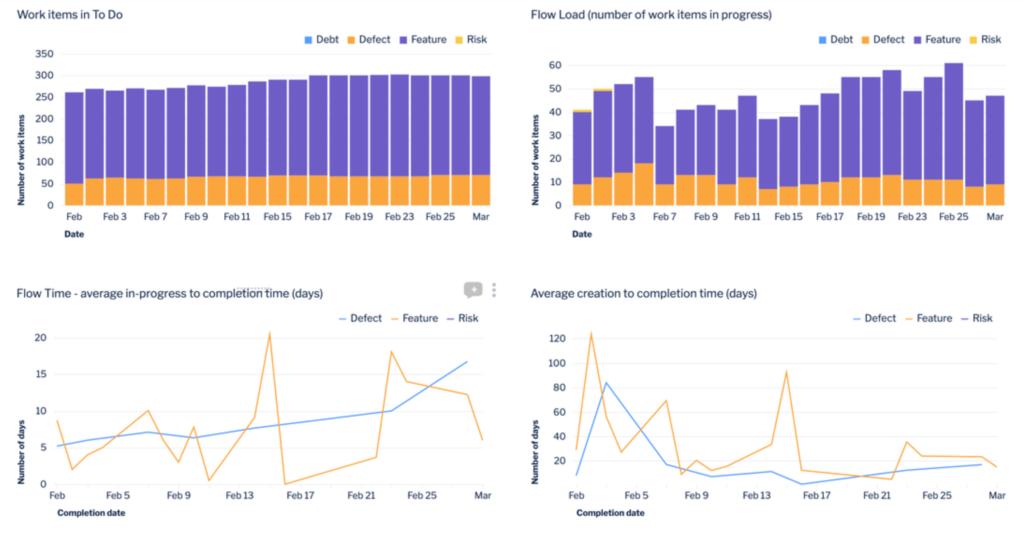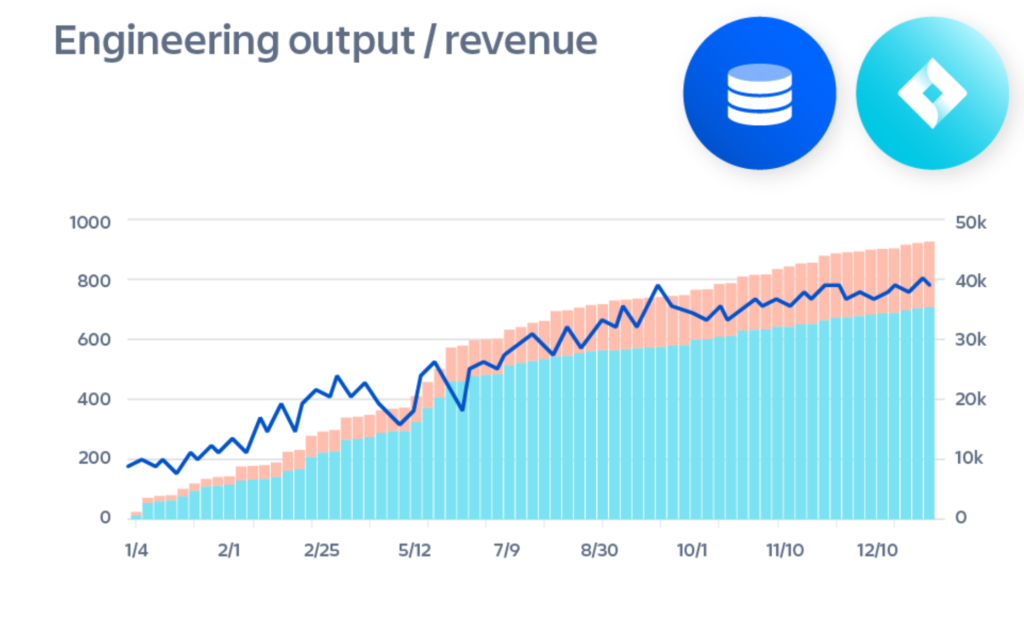Due to Covid-19, many things have changed in offices around the world; companies suddenly had to start working in completely different ways. Ways they weren't used to. All of a sudden, their employees were not sitting grouped together at their desks in the office anymore, but at home, making communication channels much longer and increasing the hurdles for collaboration.
Atlassian's answer to this development is a common platform consisting of apps that connect teams while giving them the freedom to use the tools they want to use. It automates the boring processes so that teams can focus on actually creating value for the company. It also gives them information based on cold hard data so they can make better decisions faster. Two of the apps from these platforms are Atlassian Data Lake and Atlassian Analytics.
Atlassian Data Lake: collecting data from Atlassian apps in one queryable place
Many companies use Atlassian products, and they're usually very important when managing work across several teams. This work often contains vital data that help companies see how fast teams are working, how resources are allocated and what the return on investment is. Previously, Atlassian showed information pertaining to these topics in in-product dashboards. It can be hard and time-consuming to build custom reports for most teams, though, because extracting data with APIs and scripts isn't as easy as it may seem. There also wasn't an easy way to analyse data across products or instances.
Cue Atlassian Data Lake! This new tool contains cross-product and cross-instance data that can be easily analysed. It's built on the enterprise-grade trusted Atlassian platform, which should allay all your privacy and security fears.
When Atlassian Data Lake is launched, data from Jira Software and Jira Service Management will be included, but in the future, all data from all Atlassian products will be added.
Atlassian Analytics: Flexible visualisation of data via SQL or no-code
People are unique, so teams are as well. Atlassian products help nurture that uniqueness by offering as much flexibility as possible. This also counts for the access to the data in theAtlassian Data Lake. This is done through using the technology from Chartio, a cloud-based visualisation and analytics solution that Atlassian acquired last year. This technology was put into Atlassian Analytics, which serves as a central hub that is connected to the Atlassian Data Lake and lets users access their data in several ways.
Out-of-the-box interactive dashboards
There are different ways that Atlassian Analytics delivers insights using the Data Lake, the first of which is interactive dashboards. These let you keep an eye on workflows across projects and products, for example with the flow metrics dashboard, you can see bottlenecks, blockers and team load across multiple value streams. You can even get down to project level to see exactly what's going on.
SQL visualisation
This lets you customise your dashboards and charts and use SQL queries to get information directly from the Atlassian Data Lake.
No-code visualisation
You don't have to be a programmer to analyse the data and make charts quickly without using SQL. For example, you can get data from stories and bugs that are assigned to you from Jira Software and change requests or incidents from Jira Service Management. These can then be shown in a chart, after which you can comment directly on the chart to involve the people that need to know about it.
There's also a snapshot button that enables teams to compare charts and data from the previous week to understand trends.
Blending in data from other sources
So, you can collect information from various Atlassian tools, but what would make it even more powerful? Right, being able to combine this data with other business-critical data sources! This is possible in Atlassian Analytics. For example, you can get a revenue growth report from Snowflake and map it against an engineering output from Jira Software to see what effects new features have had on the growth goals of the company. Nifty, isn't it?
Coming soon - direct connection to external business intelligence (BI) tools
Last, but not least, Atlassian knows that there are powerful BI tools out there, like Tableau or Microsoft Power BI, that companies would love to be able to connect to Atlassian Data Lake. Well, we can bring you good tidings: Atlassian is already working on finding a way to connect these, and other, BI tools to the Atlassian Data Lake, so stay tuned!
The overall idea behind these two new tools is that every team can work smarter and unleash their full potential by getting recommendations to improve how fast they work and leaders can see how team health can be improved, which also feeds into the team velocity.
Now available in the EAP
Every team gets tailored suggestions on how to optimize velocity, and every manager gets insights to improve higher-level processes - Atlassian Data Lake and Atlassian Analytics are poised to make this scenario a reality.
Atlassian Analytics and Data Lake are now available via Early Access Program for Enterprise customers of Jira Software or Jira Service Management.
Your partner for Atlassian software
Do you have questions about Atlassian Cloud and the migration of Confluence, Jira, and Jira Service Management? As an Atlassian Platinum Solution Partner with experience from thousands of Atlassian projects, we are happy to help you evaluate your project and move your existing systems. Get in touch with us!




